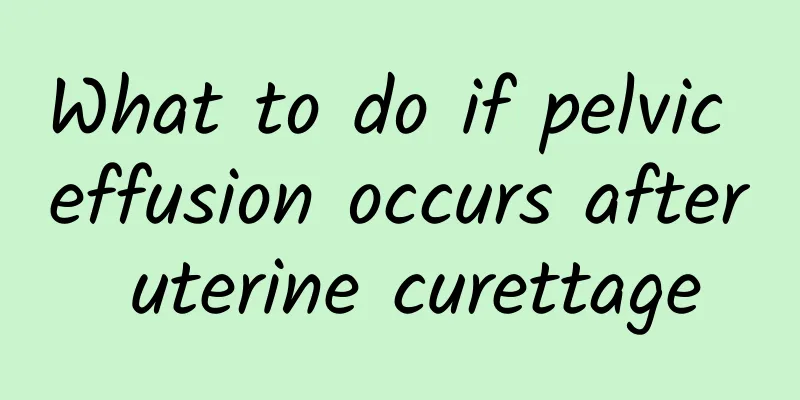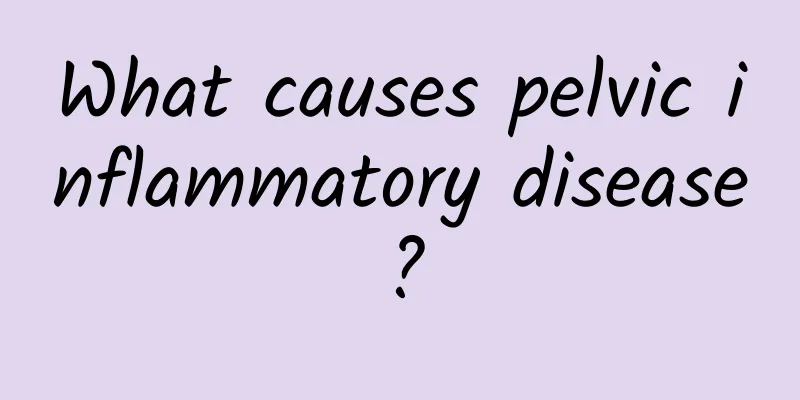What to do if pelvic effusion occurs after uterine curettage

|
Curettage is a traditional artificial abortion. It is very easy to get infected after the operation, so it is also easy to get infected in the pelvis and cause pelvic effusion. What should I do if pelvic effusion really occurs after curettage? Pelvic effusion is often accompanied by bilateral or unilateral lower abdominal pain, lumbosacral pain, backache, lower abdominal distension, pain, backache, etc., or due to long-term standing, overwork, sexual intercourse, or premenstrual aggravation, severe cases affect work. Or lower abdominal pain, or increased leucorrhea, menstrual disorders, heavy menstrual blood, dysmenorrhea, sexual discomfort; patients feel very uncomfortable and should be treated immediately and actively until the effusion is absorbed and dissipated. Therefore, if pelvic effusion occurs after uterine curettage, you should go to the hospital for treatment immediately to prevent the infection from worsening. There are several ways to treat pelvic effusion in hospitals, but the situation is usually not very serious, because it is also after surgery, it is not advisable to undergo surgery again, so surgical treatment is usually not used in the treatment plan of pelvic effusion. Instead, several other methods are used: 1. Traditional Chinese medicine treatment It mainly clears away heat and toxic substances, cools blood and relieves inflammation, and then mainly promotes qi and blood circulation, softens and disperses nodules, and breaks up blood stasis and promotes new growth. "Fuliangfang Pelvic Inflammation Patch" has comprehensive functions such as promoting qi and blood circulation, softening and dispersing nodules, eliminating latent diseases, improving local microcirculation, and maintaining normal physiological metabolism of the human body. 2. Western medicine treatment Antibiotics are the main treatment for infection, and surgery is performed when necessary. Broad-spectrum antibiotics are selected based on experience to cover possible pathogens, including Neisseria gonorrhoeae, Chlamydia trachomatis, Mycoplasma, anaerobic bacteria, and aerobic bacteria. 3. Other drug treatments When using anti-inflammatory drugs, you can also use 5 mg of α-chymotrypsin or 1500 U of hyaluronidase at the same time, injected intramuscularly once every other day, 5 to 10 times as a course of treatment, to facilitate the absorption of adhesion and inflammation. At the same time, you should pay attention to personal hygiene to avoid being infected with other diseases again. |
<<: How to prevent uterine prolapse
>>: How long does it take for abdominal pain to start in ectopic pregnancy?
Recommend
Can you drink cocoa powder during menopause? You can eat these to improve
Cocoa powder is a kind of food that many people l...
Menstruation is delayed for 14 days, and the pregnancy test stick is one dark and one light
Menstruation is delayed for 14 days, and the preg...
Finding out the cause of adnexitis is the key to treatment
Among the many gynecological diseases, adnexitis ...
What are the test indicators for adenomyosis?
What are the examination indicators for adenomyos...
3-stage weight management to eliminate stress-induced obesity
(Text/Yang Qilin) Weight management for stress-in...
How to treat uterine fibroids? What are the treatments for uterine fibroids?
Uterine fibroids are one of the most common benig...
Daily body shaping exercises to improve OL's bad posture
Daily body shaping exercises to improve OL's ...
3+5 steps of massage before bed to create slender legs
"The most difficult part of losing weight is...
Eating endless barbecue during Mid-Autumn Festival? Cardiovascular alarm! 10 Foods to Suppress Your Appetite
The Mid-Autumn Festival is approaching, and the s...
Can constipation cause abnormal vaginal discharge?
Can constipation cause abnormal leucorrhea? Const...
Can cervical erosion be cured with gynecological gel?
Cervical erosion generally refers to the ectopic ...
What are the dietary taboos for uterine fibroids? 4 types of food that must be avoided for uterine fibroids
Patients with uterine fibroids should avoid eatin...
What are the contraindications for the treatment of uterine fibroids? What tests are needed to diagnose uterine fibroids?
Uterine fibroids are a common disease in women, b...
Don’t eat breakfast for fear of getting fat? Weight loss starts with breakfast! Dr. Liu Boen: 4 principles for not eating fat for breakfast
Eating the wrong foods can easily make you fat. S...
Dietary precautions after painless abortion
As the phenomenon of unwanted pregnancies increas...









